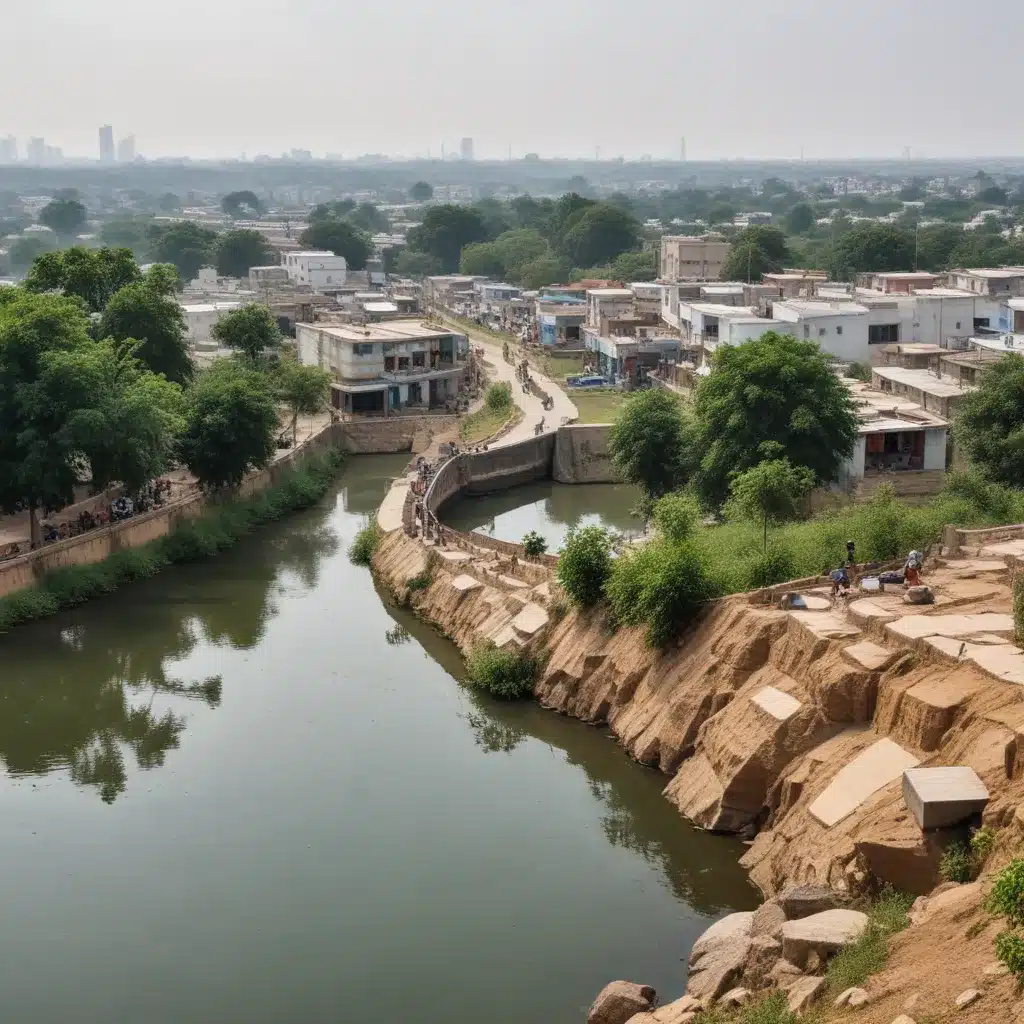
The Changing Landscape of Peri-Urban Karhera
Karhera, a former agricultural village situated between the rapidly expanding cities of New Delhi and Ghaziabad, has undergone significant transformations in recent decades due to rapid urbanization. The population is now a heterogeneous mix of original inhabitants and migrant settlers attracted by the industrialization and employment opportunities in the area.
As the village has transitioned from a primarily agricultural community to a more urban setting, there have been major shifts in land use, water availability, and livelihood strategies. Cereal crops and diverse vegetable farming have given way to the intensive cultivation of spinach, which thrives on the abundant domestic wastewater or “gandapani” available for irrigation.
The lower water table, caused by excessive groundwater extraction to meet the needs of the growing urban centers, has rendered many traditional irrigation sources unusable. This has forced farmers to either invest heavily in submersible pumps or turn to using the polluted domestic wastewater for their crops. While this gandapani-based spinach farming has become a lucrative livelihood for many, it has also heightened concerns about the potential health impacts of consuming produce grown in contaminated water.
Confronting Environmental Pollution: Water, Air, and Beyond
Karhera’s residents are acutely aware of the various forms of environmental pollution impacting their community. The once-pristine Hindon River, a crucial water source, is now severely polluted by untreated industrial effluents and urban sewage. Villagers lament the transformation of the river’s crystal-clear waters to a murky, black sludge, rendering it unusable for irrigation, drinking, or bathing.
In addition to water pollution, air pollution is another major concern for Karhera’s inhabitants. The nearby factories and industries are known to emit thick black smoke, which residents believe is responsible for an increase in respiratory problems and other non-communicable diseases in the community.
Despite these visible and tangible environmental threats, the community’s response has been fragmented and limited. While some residents, particularly the upper-caste landowners, express concerns about the health implications of consuming spinach grown in gandapani, others do not acknowledge any potential risks and continue to rely on this contaminated water for their livelihoods.
The Complexities of Collective Action
The lack of a unified, collective response to the environmental challenges facing Karhera can be attributed to several factors. Firstly, the heterogeneous nature of the community, with a mix of original inhabitants, upper-caste landowners, lower-caste residents, and migrant workers, has led to divergent perspectives and competing interests.
Upper-caste landowners, who have historically wielded significant political and social influence in the village, have seen their power erode as Karhera has transitioned to an urban ward. This sense of disempowerment and loss of control has contributed to a reluctance to engage in environmental activism, as they may perceive it as a threat to their remaining privileges.
Moreover, the economic interdependencies within the community have created a web of mutual reliance that inhibits collective action. Landowners depend on migrant workers for labor, while migrants rely on the landowners for housing and other opportunities. This mutual need has dampened the potential for a unified environmental justice movement, as various groups are hesitant to jeopardize these economic ties.
Compounding these challenges is the marginalization of Karhera’s residents from formal political processes and governance structures. The transition from a rural Panchayat (village council) to an urban administrative system has left the community feeling disconnected from decision-making bodies, further undermining their ability to advocate for environmental improvements.
The Media Narrative and the Absence of Dalit Voices
An analysis of media coverage on environmental issues in the broader Ghaziabad region reveals a concerning trend. While the local press has reported extensively on the poor water quality of the Hindon River and the health consequences associated with industrial pollution, these narratives have largely overlooked the specific experiences and concerns of Karhera’s residents.
The media discourse has tended to focus on the environmental woes of the middle-class urban population, neglecting the unique challenges faced by marginalized communities like Karhera. This absence of Dalit voices and perspectives in the public discourse has further contributed to the invisibility of their environmental struggles.
Without a platform to amplify their concerns, Karhera’s residents have found it increasingly difficult to garner attention and support for addressing the intersections of environmental degradation, public health, and social justice. This lack of representation in the media has perpetuated the community’s sense of isolation and disempowerment in the face of mounting environmental challenges.
Towards a More Inclusive Environmental Justice Movement
The case of Karhera highlights the urgent need to reframe environmental justice discourse in India to better reflect the experiences and perspectives of marginalized communities, particularly Dalits. By incorporating caste-based experiences of environmental discrimination and exclusion, the environmental justice movement can evolve to address the unique challenges faced by these communities.
Engaging Dalit scholars, activists, and community leaders in shaping the environmental justice agenda is crucial. Their insights can help to uncover the deep-rooted links between caste, environmental degradation, and health impacts, shedding light on the complex socio-spatial dynamics that perpetuate environmental injustices.
Moreover, fostering collaboration between Dalit organizations and mainstream environmental groups can create opportunities for knowledge-sharing, coalition-building, and the co-creation of holistic solutions. By amplifying Dalit voices and centering their experiences, the environmental justice movement can become more inclusive, representative, and effective in addressing the intersections of caste, class, and ecological concerns.
Ultimately, the path towards a more equitable and sustainable future for communities like Karhera lies in acknowledging the diverse lived experiences of environmental degradation and empowering marginalized groups to become active participants in the environmental justice discourse. Only by embracing this intersectional approach can we truly work towards a just and inclusive vision for environmental protection and community wellbeing.

